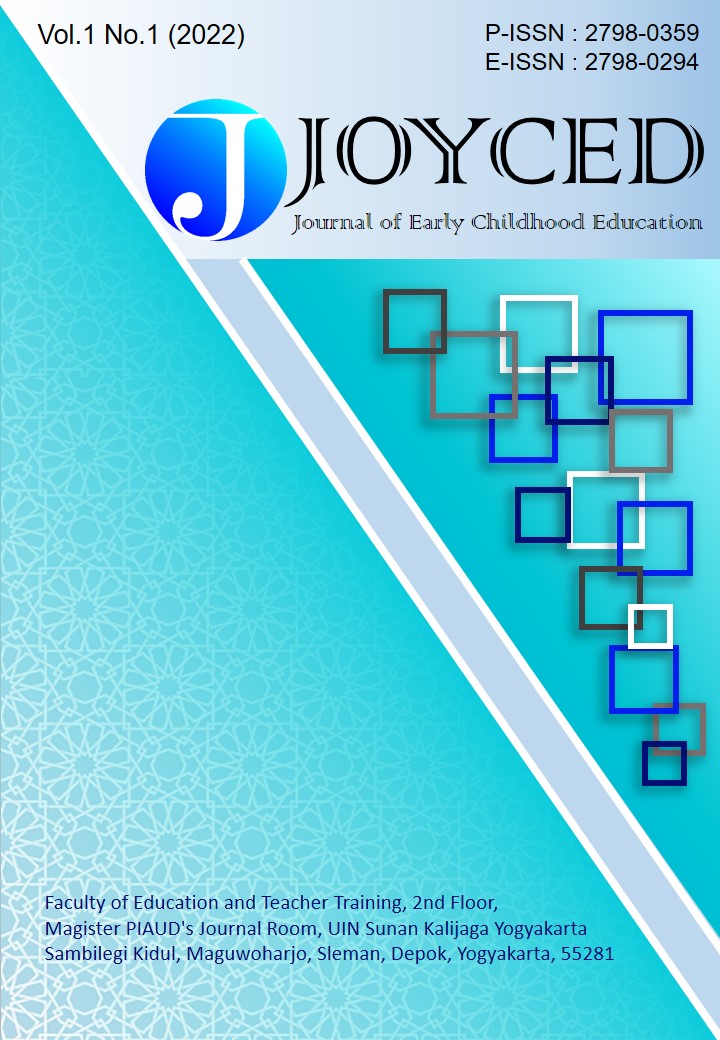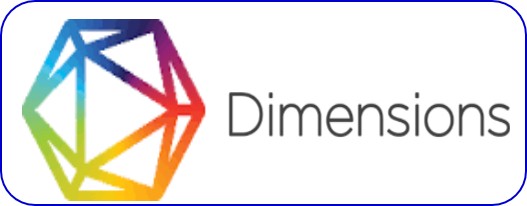Ability Cognitive Children Age Early Between Methods Brain Gym and Methods Providing Duty
DOI:
https://doi.org/10.14421/joyced.2021.11-04Keywords:
Cognitive Abilities, Early Childhood, Brain Gym, Providing DutyAbstract
Children's cognitive abilities have not been appropriately achieved. This is due to the use of methods that are considered less effective in the learning process. The purpose of this study was to determine the reality of differences in cognitive abilities of early childhood with the Brain Gym method and the assignment method for Group B at RA Al-Wafi Panyileukan Bandung City. The research method used is Quasi Experiment with non-equivalent control group design research. The results showed that children's cognitive abilities using the Brain Gym method and those using the Giving Task method had significant differences. This was evidenced by the results of hypothesis testing, which showed the t value = 8.97 more effective than the t table value = 2.043 at a significance level of 5 %.
Downloads
References
Abdelkarim, O., Ammar, A., Chtourou, H., Wagner, M., Knisel, E., Hökelmann, A., & Bös, K. (2017). Relationship between motor and cognitive learning abilities among primary school-aged children. Alexandria Journal of Medicine, 53(4), 325–331. https://doi.org/10.1016/j.ajme.2016.12.004
Abduh, B., & Tahar, M. M. (2018). The effectiveness of brain gym and brain training intervention on working memory performance of student with learning disability. Journal of ICSAR, 2(2), 105–111.
Aisyah, S., & Hidayat, H. (2015). Aktivitas Mengajar Anak TK/ RA dan PAUD. Arvino Raya.
Astuti, N. A. (2014). Penerapan Metode Puzzel Berbantuan Brain Gym untuk Meningkatkan Kemampuan Kognitif Pada Anak Usia Dini. PG-PAUD Universitas Pendidikan Ganesha, 2(1).
Dennison, P. . ., & Dennison, G. . . (1986). Brain Gym. Edu-Kinesthetics, Inc.
Fauziddin, M., & Mufarizuddin, M. (2018). Useful of Clap Hand Games for Optimalize Cogtivite Aspects in Early Childhood Education. Jurnal Obsesi : Jurnal Pendidikan Anak Usia Dini, 2(2), 162. https://doi.org/10.31004/obsesi.v2i2.76
Fedewa, A. L., & Ahn, S. (2011). The Effects of Physical Activity and Physical Fitness on Children's Achievement and Cognitive Outcomes. Research Quarterly for Exercise and Sport, 82(3), 521–535. https://doi.org/10.1080/02701367.2011.10599785
Hayati, T. (2014). Pengantar Statistik Pendidikan. Insan Mulia.
Jakni. (2016). Metodologi Penelitian Bidang Pendidikan. Alfabeta.
Khadijah. (2016). Pengembangan Kognitif Anak Usia Dini. Perdana Publishing.
Khuluqo, I. El. (2020). Brain Gym Optimization Methods in Improving Early Age Child Fine Motor Skills BT - Proceedings of the 1st International Conference on Early Childhood Care Education and Parenting (ICECCEP 2019). 37–41. https://doi.org/https://doi.org/10.2991/assehr.k.201205.082
Made, N., & Astuti, A. (n.d.). Kegiatan senam otak dalam meningkatkan perkembangan kognitif pada anak usia dini. 601–607.
Rabipour, S., & Raz, A. (2012). Training the brain: Fact and fad in cognitive and behavioral remediation. Brain and Cognition, 79(2), 159–179. https://doi.org/https://doi.org/10.1016/j.bandc.2012.02.006
Rahman, U. (2009). Karakteristik Perkembangan Anak Usia Dini. Lentera Pendidikan : Jurnal Ilmu Tarbiyah Dan Keguruan, 12(1), 46–57. https://doi.org/10.24252/lp.2009v12n1a4
S, D. (2017). Brain Gym Stimulasi Perkembangan Anak PAUD. CV Ketaka Grup.
Sugiyono. (2011). Metode Penelitian Kuantitatif dan R&D. Alfabeta.
Sugiyono. (2013). Metode Penelitian Kuantitatif, Kualitatif, dan R&D. Alfabeta.
Susanto, A. (2011). Perkembangan Anak Usia Dini stimulasi dan Aspek Perkembangan Anak. Kencana Media Grup.
Syah, M. (2014). Psikologi Pendidikan dengan Pendekatan Baru. Remaja Rosdakarya.
Wiyani, N. A. (2014). Format PAUD, Konsep Karakteristik dan Implementasi Pendidikan Anak Usia Dini. Ar-Ruzz Media.






.png)











